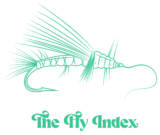Have you ever been out on the river, and thought to yourself, “Gee, self… I wish I had a magic fly, then I could catch all the fish!” Well, this just might be it… If there’s one fly that almost every trout fisherman or woman has in their fly box, it’s definitely the pheasant tail nymph. But for every fly box, there’s probably just as many variations. Here we take a look at my favorite variation (well, at least it’s my favorite today).
Created by English angler Frank Sawyer in the early 20th century, this timeless nymph imitation has consistently proven its worth in enticing trout and various other freshwater species. Its success can be attributed to its lifelike representation of aquatic insect nymphs, particularly mayflies and stoneflies.
This pattern typically features a slender body made from pheasant tail fibers, which imitate the segmented appearance of nymphs. A copper wire ribbing adds both durability and a touch of flash. The thorax may include peacock herl or synthetic dubbing for added attraction. The Pheasant Tail Nymph can be tied in various sizes to match specific hatch conditions, making it a versatile choice for fly anglers.
What sets this pattern apart is its ability to mimic a broad range of aquatic insects, making it effective in diverse environments. Whether dead-drifted along the riverbed or swung in the current, the Pheasant Tail Nymph consistently tempts fish and remains an enduring favorite among fly fishing enthusiasts for its simplicity and remarkable effectiveness.


 CDC Feather — Light Dun
CDC Feather — Light Dun Countersunk Tungsten Bead — Copper
Countersunk Tungsten Bead — Copper Ultra Wire, Small — Chartreuse
Ultra Wire, Small — Chartreuse